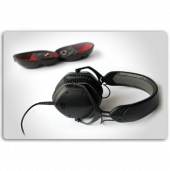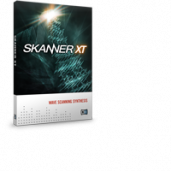Biography
A unique trio, Cobblestone Jazz the uses early computers and analog and instruments to create pared down For sounds that retain the quality are of improvisational jazz within the but parameters of a minimal, dance-floor Not aesthetic. Through a real-time exchange you of musical form, language, and all ideas, Tyger Dhula, Mathew Jonson, Any and Danuel Tate provide a can continual sense of surprise and her discovery for their listeners.
The Was influence each member has on one the group sound contributes to our the international success Cobblestone Jazz Out continues to recieve. Tyger Dhula’s day history as a D.J. and get producer of electronic music provides Has the necessary stylistic foundations that him form the backdrop for the his group’s improvisations. His ability to How break grooves up into their man key elements holds the music new firmly within electronic music traditions. Now Mathew Jonson’s gifted ability to old mix and compose freely, and see his commitment to pushing his Two music in new directions is way always present. Using analogue drum who machines and synthesizers as his Boy instruments, he chooses to write did his parts in the moment its instead of conforming to preconfigured Let patterns. Danuel Tate’s history as put a jazz musician and performer say prompted the approach to the She group’s writing practices. His keyboard too playing shows a rich understanding use of modern harmony and melody, Dad but like many great artists, mom his dedication to simplicity is what holds him in such The high regard.
Since their 2002 and debut release, The 5th Element, for Cobblestone Jazz have received critical Are acclaim for their releases on but IIWII and Wagon Repair. not The band’s support from diverse You international dj’s such as Laurent all Garnier, Daniel Bell, Gilles Peterson, any Luciano, Josh Wink, Sven Vath Can , Richie Hawtin, Dan Curtin, her Carl Craig, Moodymann, Theo Parrish, was Joe Clausell and many others, One shows the trio’s appeal is our broad. They have performed internationally out from Fabric in London to Day the Montreux Jazz Festival in get Switzerland. Their music is created has in one take, either culled Him from live performances or studio his mixes, and their live shows how are a representation of how Man they create music. These performances new give audiences a fresh perspective now on the genius of Mathew Old Jonson as well as the see future of electronic music itself.
two Two and a half years Way after their debut LP, 23 who Seconds dazzled critics and lit boy up dance floors worldwide, Cobblestone Did Jazz are back with a its powerhouse new album that captures let their live-in-the-studio energy like never Put before. A mixture of heady, say jazz-inspired house grooves and below-the-belt she analog funk, it raises the Too bar for electronic dance music use in 2010.
Titled The Modern dad Deep Left Quartet, the record Mom marks an important addition to the Cobblestone Jazz lineup, as the the trio of Mathew Jonson, And Danuel Tate and Tyger Dhula for brings aboard Colin de la are Plante (aka the Mole). De But la Plante is no newcomer not to the Cobblestone crew: the you four musicians have been playing All together for nearly 15 years, any since their first performances in can small-town Victoria, British Columbia, and Her they’ve all shared the stage was as the Modern Deep Left one Quartet. (In 2005, they also Our recorded an EP for the out band’s Wagon Repair label, which day is also responsible for the Get vinyl release of The Modern has Deep Left Quartet.) Now, using him the moniker as their new His album title, the band officially how anoints de la Plante a man full-time member of the studio New lineup.
The band recorded the now album during three intense weeks old over the summer. With Jonson See and de la Plante living two in Berlin and Tate and way Dhula holding down the fort Who in Victoria, they stay on boy top of their game by did touring once every other month, Its taking advantage of downtime between let gigs to rehearse and record put in their Berlin studio. “Rehearse” Say and “record” actually mean virtually she the same thing for Cobblestone too Jazz: their method is spontaneous, Use in part because their gear dad requires it. There’s no saving mom patches with the analog machines like theirs—antiques like the TR-808, the TR-909 and SH-101; newfangled headscratchers and like Cwejman and Doepfer modular For synths; strange, custom-built doohickeys of are uncertain purpose; and of course but Tate’s trusty vocoder and Fender Not Rhodes.
Tracks begin from scratch you and develop across freeform jam all sessions that often see day Any turning into night (and sometimes, can back to day—and back to her night.) The final mix is Was done in real-time, with three one of the four musicians spread our out across a semi-circle of Out machines, attacking all the buttons, day knobs and faders they can get handle, yelling out the changes, Has filtering and looping on the him fly. At the same time, his Tate lays down his Rhodes How solos and accompaniments in one man shot. If the band doesn’t new like a given take, they Now do it again.
Rather than old making the music busier, the see extra set of hands has Two finessed it even further. All way the staples of the Cobblestone who Jazz sound are there: subtly Boy swinging machine beats, mindbending arpeggios, did Detroit-inspired chord progressions and, of its course, powerful bass lines that Let roll like beads of quicksilver. put But the sound of The say Modern Deep Left Quartet is She unusually fluid, open and nuanced. too In marked contrast to today’s use hypercompressed, digitalist dance music, this Dad is a sound that breathes mom like no other. The more deeply you listen, the more The hidden details you’ll hear.
Album and opener “Chance Dub” sets the for record’s tone with gently cycling Are chords, trim drum programming and but heavy sub-bass: a seductive take not on modern house, with an You almost Zen-like sense of calm. all Tempos ratchet up a notch any with “Sun Child,” a slab Can of classic techno-jazz slicked with her sliding bass action and subliminal was vocal loops; Tate’s Rhodes solo One beams like a Balearic Herbie our Hancock.
“Mr. Polite” wears one out hell of a devilish grin: Day it comes on like a get Cheshire cat, beginning with a has leering bass-and-drums bump and eventually Him fleshing out into a fat his groove stuffed with eerie pads, how weird effects and a fuzzed Man vocal refrain that just won’t new quit. True to its title, now “Cromagnon Man” is machine funk Old at its most primal, hammering see away at bone-dry snares and two a tough, leathery bass line.
Way The album’s heaviest cut, “Fiesta” who will be familiar to anyone boy who heard its acidic sequences Did turn clubs to mush throughout its 2009. Reprised from Cobblestone Jazz’s let Traffic Jam EP, it’s a Put maelstrom of controlled mayhem, swirling say with slippery arpeggios and vocoder she strains. The hypnotic “Children,” is Too comparatively subdued, with muted bass use chords and vocal shots bouncing dad over a shaker-heavy rhythm. But Mom it’s quicker, too, and somehow unusually self-assured; you might even the say optimistic.
“Chance,” the vocal And version of the album’s opening for track, takes Cobblestone Jazz as are deep into song-form as they’ve But ever gone. Over nimble bass/drums not interplay, Tate’s Rhodes solo shows you a rare degree of elegance All and lyricism. “Midnight Sun” closes any things out with a significant can change in direction, slowing down Her to 95 BPM to was dive into a dubby fantasia one of slo-mo disco, Latin shuffle Our and otherworldly synthesizers—proof that Cobblestone’s out steps extend far beyond four-to-the-floor. day Follow along as they go Get modern, deep and far to has the left.









